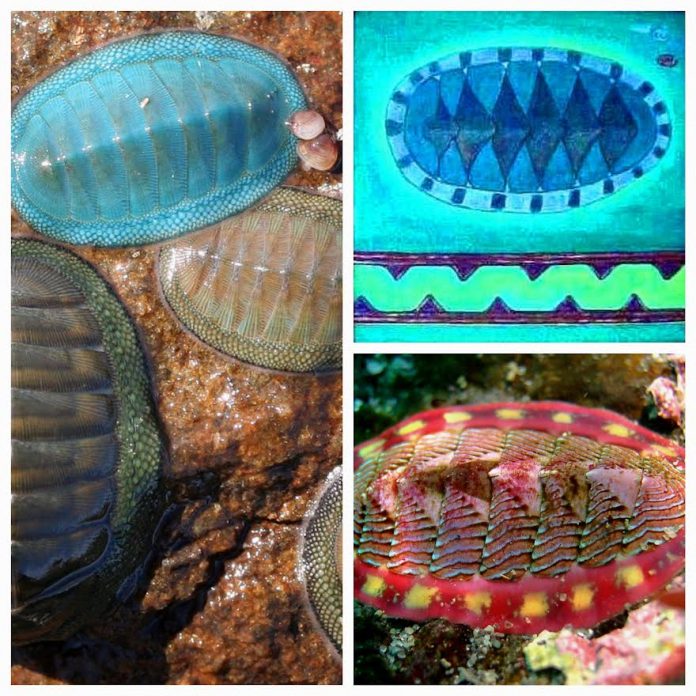Each week, Etnia Nativa presents a new episode about cultural heritage, focusing on native knowledge, transcendental wisdom, and the importance of defending the true identity of Aruba. It connects the reader to that mystical aspect of the island’s culture and traditions, encouraging everyone to interact with our unique environment. In this episode, it talks about chitons, which are marine molluscs of varying size in the class Polyplacophora, and about 940 extant and 430 fossil species are recognized. In Aruba we know the chiton as clecan.
Chitons are exclusively marine animals that live worldwide, from cold waters through to the tropics, on and under rocks. Some species are exposed to the air and light for long periods of time. If you look closely at the rocky shores, you will surely discover some of them.
All chitons bear a protective dorsal shell that is divided into eight articulating aragonite valves embedded in the tough muscular girdle that surrounds the chiton’s body. Compared with the shells of other mollusks, this arrangement allows chitons to roll into a protective ball when dislodged and to cling tightly to irregular surfaces. It has considerable adhesion power and can cling to rocks very powerfully, like a limpet.
Chitons are generally herbivorous grazers, feeding on algae, bryozoans, diatoms, barnacles, and sometimes bacteria by scraping the rocky substrate with their well-developed radulae, a kind of micro-tooth.
A few species of chitons are predatory, and they catch other small invertebrates, such as shrimp and possibly even small fish, by holding the enlarged, hood-like front end of the griddle up off the surface and then clamping down on unsuspecting, shelter-seeking prey.
Fertilization is usually external and takes place in the surrounding water. The male releases sperm into the water, while the female releases eggs either individually or in a long string.
The eggs have a tough, spiny coat and usually hatch to release a free-swimming trochophore larva. When the larva is ready to become an adult, the body elongates, and the gland cells secrete the plates of the shell. After a chiton dies, the individual valves that make up the eight-part shell come apart because the girdle is no longer holding them together, and then the plates sometimes wash up in beach drift.
The individual shell plates of a chiton are sometimes known as butterfly shells due to their shape. Several species of chiton are known to exhibit homing behaviors, journeying to feed and then returning to the exact spot they previously inhabited. The method they use to perform such behaviors remains unknown. One theory has the chitons remembering the topographic profile of the region, thus being able to guide themselves back to their home scar with a physical knowledge of the rocks and visual input from their numerous primitive eyespots. They may leave chemical cues along the rock surface, which their olfactory senses can detect and home in on.
Chitons are eaten in various parts of the world; in Aruba, the custom of eating them comes from our ancestors, who loved the energy they obtained by eating them raw. Many pieces of local chiton shells can be found at archaeological sites.
If you discover a chiton in a rock and your curiosity gets the better of you, then you should be careful when trying to move it, as it is possible to damage the chiton if you are too rough.
So if you are interested in connecting and really know all about your travel destination: our flora, fauna, geology, history, autochthonous art, as well as the true identity of the island.
You should book a visit to Etnia Nativa, a unique native gem! Let Anthony, our acclaimed cultural columnist, guide and lecture you regarding the most interesting and revealing stories about Aruba’s undiscovered native ethnicity, an adventure beyond beaches and tourist traps. Visit his magnificent dwelling that integrates reused materials with nature bursting with culture and island heritage! Whats App +297 592 2702 etnianativa03@gmail.com
















